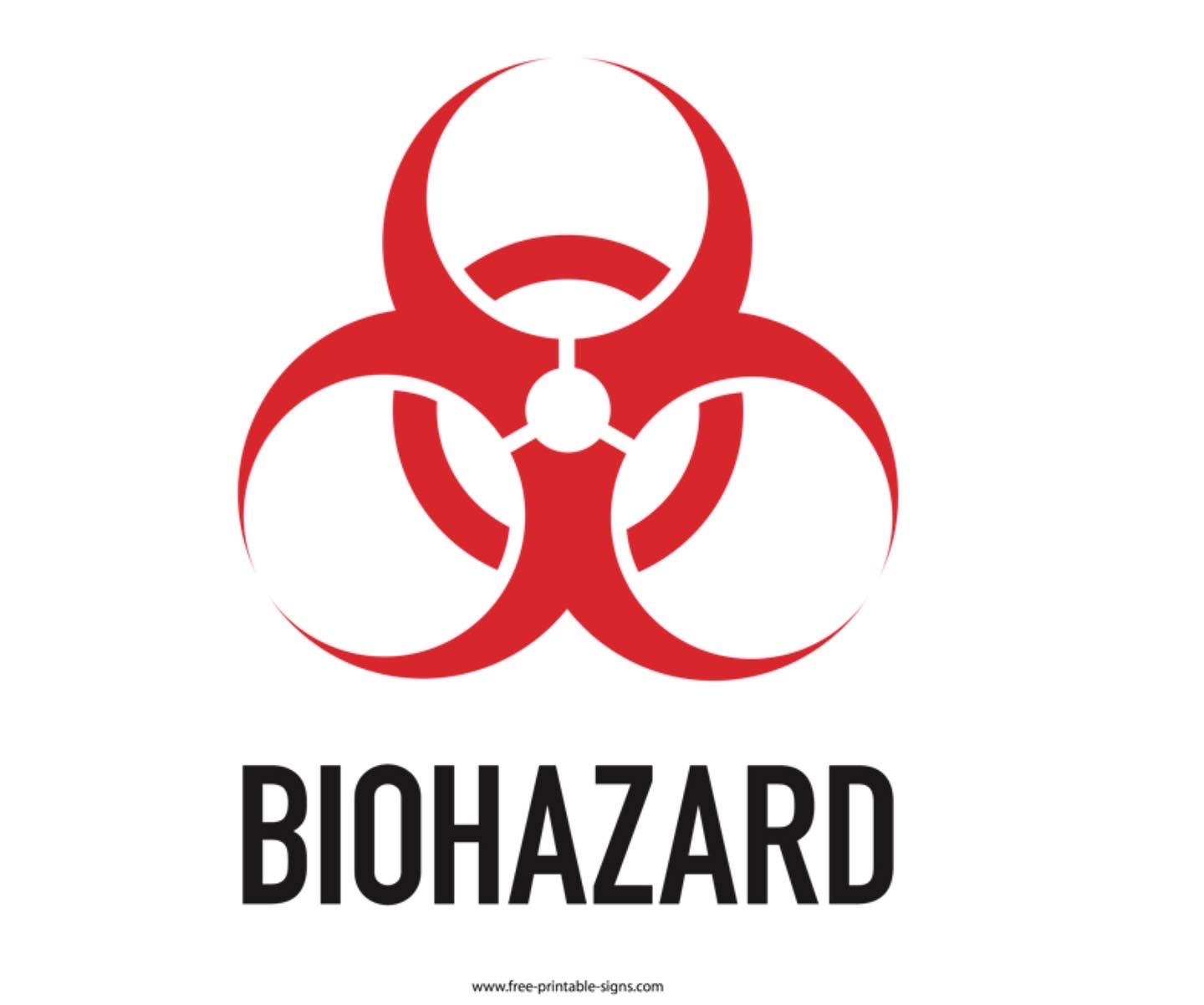Biosafety Levels

How do we handle the world most dangerous viruses?
Have you ever heard of biological hazard and wondered what it means? You have probably seen this sign somewhere, but what threat does it imply and how dangerous can it be?
Biological hazard or biohazard is a biological substance that is harmful to human health, such as those that can cause infections, allergy and poisoning. In order to categorise the levels of biohazard in terms of the risk they pose, biosafety levels (aka BSL) are used and ranked 1 to 4. Level 1 being minimum risk and level 4 being extreme risk, and each level has specific controls for containment of biological substances.
BSL-1 includes microbes that are non pathogenic, which do not cause disease in human. At this level the substances pose minimal hazard to human and the precautions are minimal.
BSL-2 is for microbes that cause mild disease to human, such as bacteria and viruses that are pathogenic and infectious. More controls are needed to handle substances in BSL-2.
BSL-3 is for working with microbes that can cause serious and fatal diseases through inhalation. Laboratory personnel is required to wear full protective clothing with respiratory protection for this level.
BSL-4 is for the most dangerous substances such as those that are highly infectious, can cause fatal diseases and usually have no treatments or vaccines. The entrance to BSL-4 laboratory contains multiple showers, vacuum room, UV light room, autonomous detection system and other safety precautions.
Exactly how much of a risk for different biosafety level you may ask? (Table for examples) For reference, HIV is classified as BSL-2 and the COVID-19 virus (SARS-CoV-2) is only classified as BSL-3!
-tx-
| Biosafety-Level | Example |
|---|---|
| 1 | Non-pathogenic strains of E.coli and Staphylococcus |
| 2 | Hepatitis A/B/C viruses, HIV, Salmonella, Toxoplasma Gondii |
| 3 | SARS-CoV-1, SARS-CoV-2, MERS-CoV, yellow fever virus, Mycobacterium tuberculosis |
| 4 | Marburg virus, Ebola virus, Variola virus, Lassa virus |
Keywords
Images
